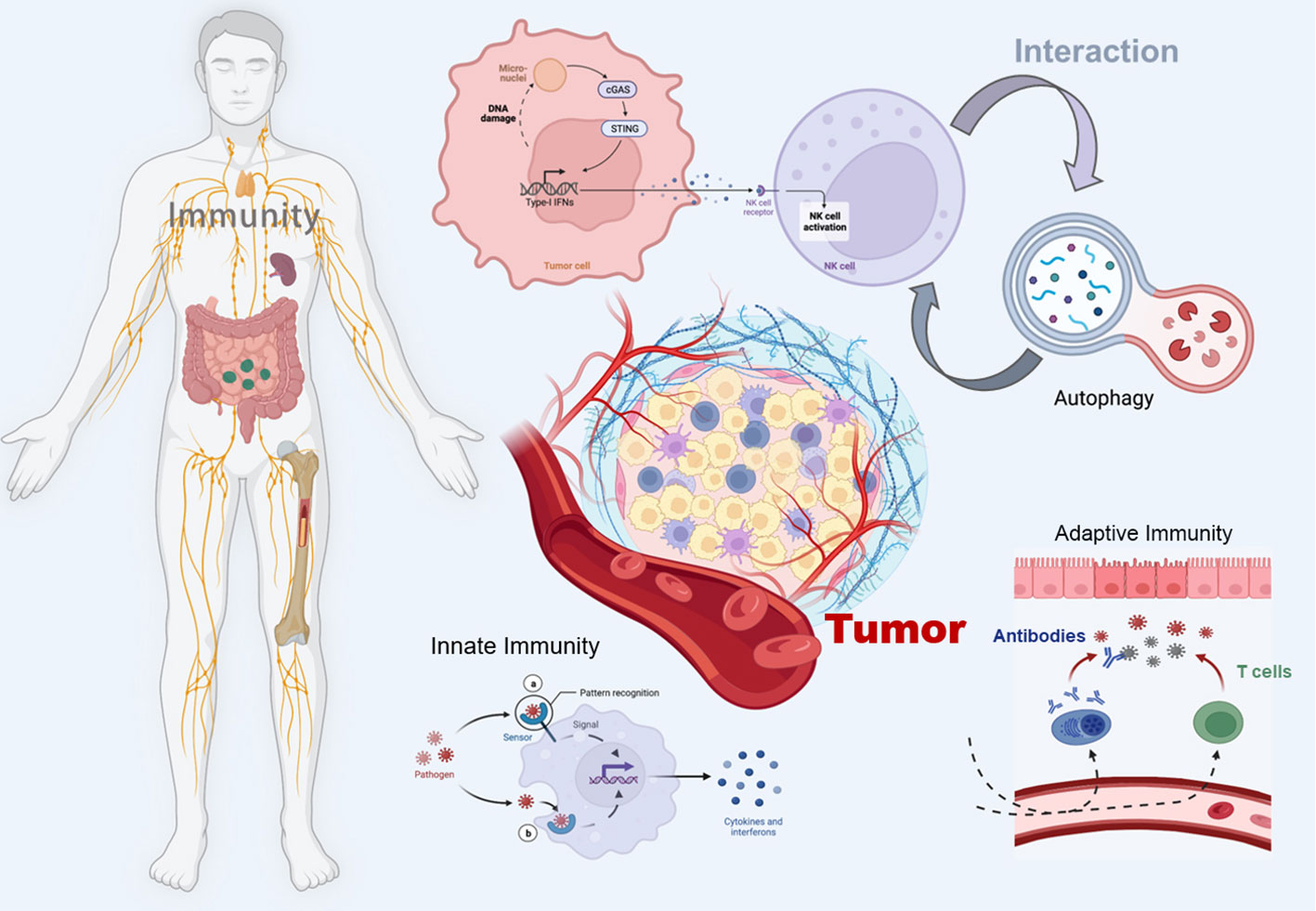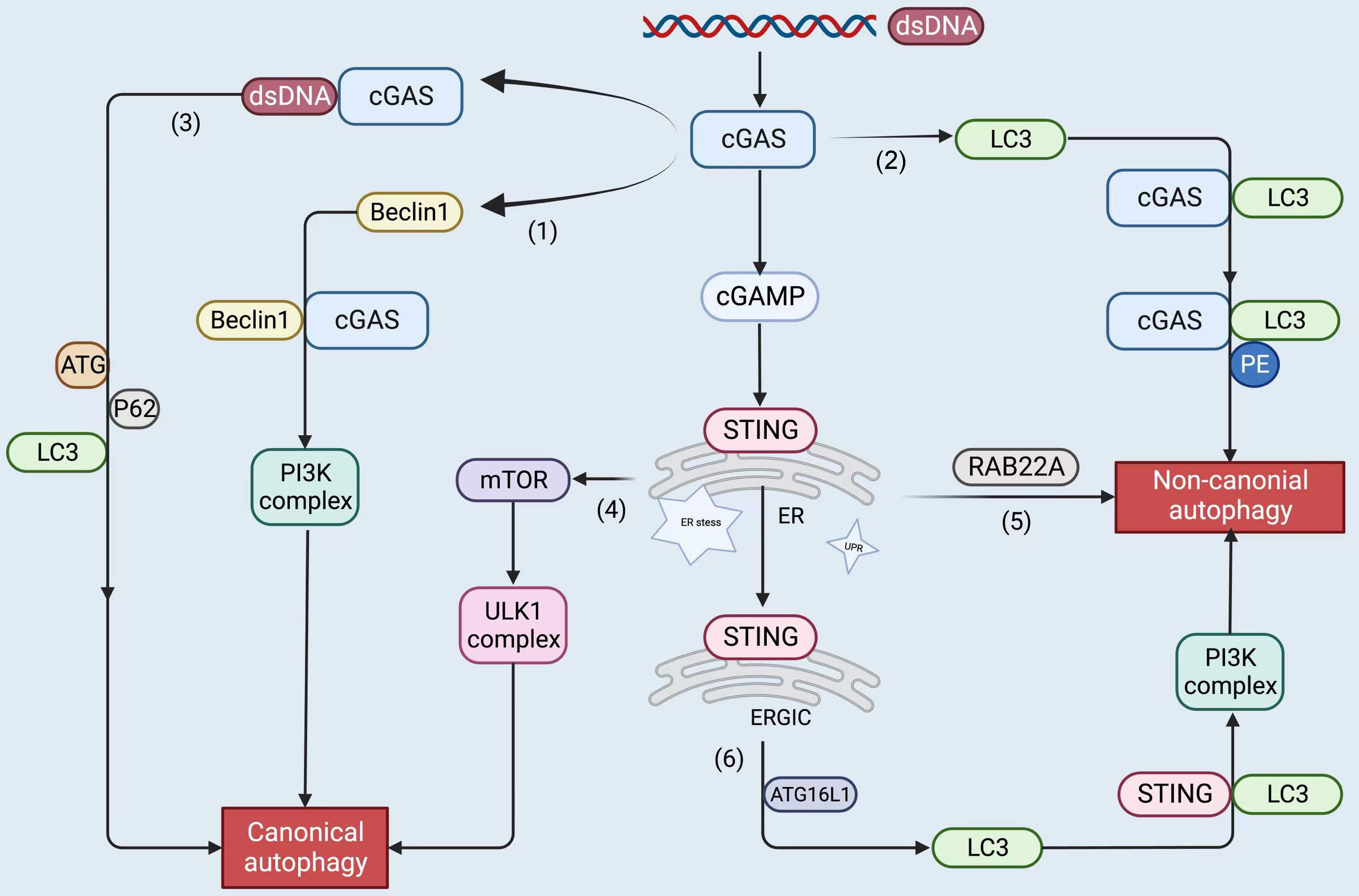Crosstalk between cGAS-STING pathway and autophagy in cancer immunity
- 1Department of Oncology, Longhua Hospital, Shanghai University of Traditional Chinese Medicine, Shanghai, China
- 2Cancer Institute, Longhua Hospital, Shanghai University of Traditional Chinese Medicine, Shanghai, China
- 3Department of Laboratory Medicine, Huadong Hospital, Fudan University, Shanghai, China
A Corrigendum on
Crosstalk between cGAS-STING pathway and autophagy in cancer immunity
by Lu Q, Chen Y, Li J, Zhu F and Zheng Z (2023) Front. Immunol. 14:1139595. doi: 10.3389/fimmu.2023.1139595
In the published article, there was an error in Figure 1 as published. The word ‘immunity’ is not capitalized, keeping the format consistent. The corrected Figure 1 and its caption “Figure 1. appear below.

Figure 1 Schematic illustration of the crosstalk between the cGAS-STING pathway and autophagy in cancer immunity. The figure was created with BioRender.
In the published article, there was an error in Figure 4 as published. The icon (2) in Figure 4 is missing. The corrected Figure 4 and its caption “Figure 4 appear below.

Figure 4 The upstream and downstream of the cGAS-STING pathway, including STING proteins, trigger autophagy by the following roughly divided mechanisms: cGAS binds to dsDNA to form liquid-phase condensates. (1) cGAS interacts with Beclin1 and triggers canonical autophagy; (2) cGAS binds to LC3 to induce non-canonical autophagy; (3) cGAS binds to dsDNA and recruits ATG, LC3, and P62 to participate in canonical autophagy; (4) STING leads to ER stress, mTOR inactivation, and coordinates autophagy; (5) STING stimulates RAB22A-mediated non-canonical autophagy derived from the ER; (6) STING recruits ATG16L1 to lipidated LC3, induces non-canonical autophagy. The figure was created with BioRender.
In the published article, there was an error in the author list, and author Yukun Chen was erroneously denoted as co-first author. The corrected author list appears below.
Qijun Lu1, Yukun Chen2, Jianwen Li1, Feng Zhu3 and Zhan Zheng1*
The authors apologize for these errors and state that this does not change the scientific conclusions of the article in any way. The original article has been updated.
Publisher’s note
All claims expressed in this article are solely those of the authors and do not necessarily represent those of their affiliated organizations, or those of the publisher, the editors and the reviewers. Any product that may be evaluated in this article, or claim that may be made by its manufacturer, is not guaranteed or endorsed by the publisher.
Keywords: antitumor, autophagy, cancer, cGAS-STING, immunity
Citation: Lu Q, Chen Y, Li J, Zhu F and Zheng Z (2023) Corrigendum: Crosstalk between cGAS-STING pathway and autophagy in cancer immunity. Front. Immunol. 14:1216456. doi: 10.3389/fimmu.2023.1216456
Received: 03 May 2023; Accepted: 10 May 2023;
Published: 19 May 2023.
Approved by:
Frontiers Editorial Office, Frontiers Media SA, SwitzerlandCopyright © 2023 Lu, Chen, Li, Zhu and Zheng. This is an open-access article distributed under the terms of the Creative Commons Attribution License (CC BY). The use, distribution or reproduction in other forums is permitted, provided the original author(s) and the copyright owner(s) are credited and that the original publication in this journal is cited, in accordance with accepted academic practice. No use, distribution or reproduction is permitted which does not comply with these terms.
*Correspondence: Zhan Zheng, zhengzhan2696@126.com
 Qijun Lu
Qijun Lu Yukun Chen
Yukun Chen Jianwen Li
Jianwen Li Feng Zhu
Feng Zhu Zhan Zheng
Zhan Zheng